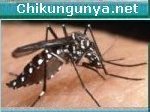Do you think a chikungunya epidemic is credible threat in the South-Eastern United States?
On one hand, a competent vectors (Aedes albopictus) is present, climatic conditions are favorable, and international tourism offers plenty of opportunities for the importation of this disease. However, the human density is low compared to parts of the world where chikungunya epidemics occured, and the American lifestyle (driving cars, air-conditioning and window screens) limits the contact with vectors.
Please indicate your opinion using the online poll on the right. I will report back on its results.
On one hand, a competent vectors (Aedes albopictus) is present, climatic conditions are favorable, and international tourism offers plenty of opportunities for the importation of this disease. However, the human density is low compared to parts of the world where chikungunya epidemics occured, and the American lifestyle (driving cars, air-conditioning and window screens) limits the contact with vectors.
Please indicate your opinion using the online poll on the right. I will report back on its results.












